International Women's Day: Our First Eight Women Employees in 1886
Women have been important to Johnson & Johnson since our founding in 1886. They have been employees, customers and generators of ideas for some of our most famous products. (Such as JOHNSON’S® Baby Powder and mass produced sanitary protection products, in case you’re wondering!) But here’s something you may not know: more than half – in fact, eight -- of our original 14 employees were women, and they rolled up their sleeves and worked alongside our founders to set up the new company and make our first products. In honor of International Women’s Day this week, let’s meet our first eight women employees:
1. Kate C---
2. Maggie S---
3. Annie K-----
4. Elizabeth C----
5. Teresa S---
6. Agnes K---
7. Lizzie K---
8. Miss M. S. D----
All 14 of our first employees in 1886 had been with Seabury & Johnson, Robert Wood Johnson’s previous company, and had been recruited by James Wood Johnson to join the new, fledgling business of Johnson & Johnson.
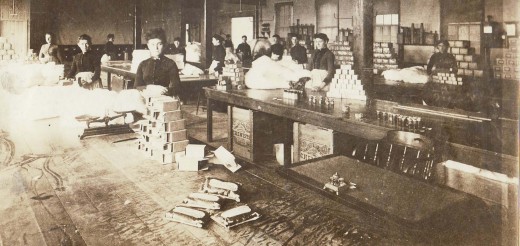
James Wood Johnson wanted the best employees he could find – the most highly skilled, the most willing to innovate and try new things – and he found eight women and six men who were willing to leave the established company of Seabury & Johnson to join the Johnson brothers in following their dream of making mass produced sterile surgical products and driving the adoption of Listerism, as Sir Joseph Lister’s sterile surgery was known back then.
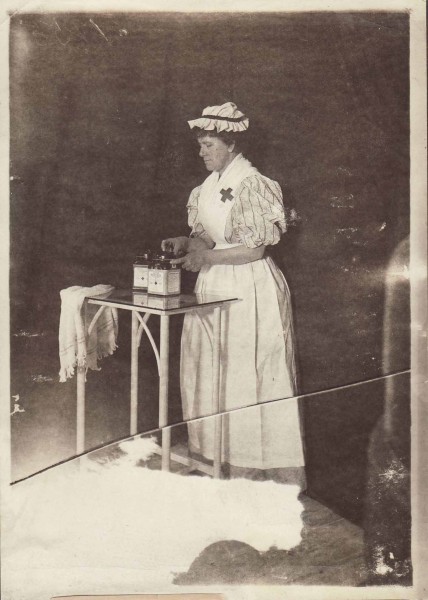
So what were our first employees like? They were highly skilled in making medicated plasters and the other products that Johnson & Johnson began manufacturing in 1886. Some of them probably were involved in Robert Wood Johnson’s fledgling work in developing sterile dressings at Seabury & Johnson. And they certainly were adventurous – they left an established business in East Orange, New Jersey to join a tiny little startup in another city based on a revolutionary idea.
Robert Wood Johnson, in his September 23, 1886 open letter stating that he had joined his brothers at Johnson & Johnson, provided a glimpse of our first employees: “…all those interested with me have had a long experience in the manufacture and sale of these preparations, it is needless to say that they understand the art of manufacturing India Rubber Plasters…” [Letter from Robert Wood Johnson the first, quoted in Robert Wood Johnson, The Gentleman Rebel, by Lawrence G. Foster, Lillian Press, 1999, p. 45.]
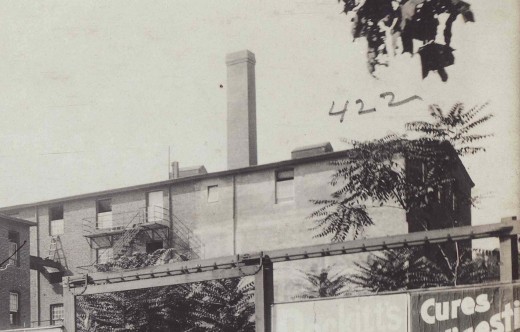
These pioneering women – alongside their six male colleagues – helped get things set up on the fourth floor of that former wallpaper factory. They made our products, put them into packages, and boxed up the finished products in wooden crates for shipping. In fact, the first check Johnson & Johnson wrote in March of 1886 was to the freightmaster on the railroad in New Brunswick – probably for shipping products.
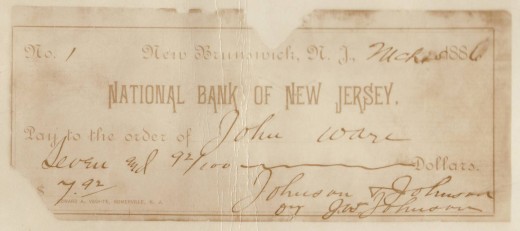
As the Company rapidly grew, our first 14 employees (including those eight women) would have trained our new employees in the rigorous methods of making Johnson & Johnson products, and some of those women found their responsibilities growing as the Company grew. For instance, Miss M. S. D----, one of our original 1886 women employees, was the manager of our Plaster Finishing Department in 1908 – the year in which International Women’s Day was founded. In fact, she was one of nine women in supervisory roles at Johnson & Johnson in that year. Miss D--- joined Laura R—and Nettie B---, who co-managed the Finishing Department; Elizabeth P---, who was in charge of our Label Department, Kate B---, who managed our Jar Finishing Department, Gussie D---, who supervised our Sanitary Napkin Department, Emma T----, who managed the Lister Fumigator Department, and Nora H---, who managed the Aseptic Department – our entire sterile manufacturing operations, and the most demanding area of the Company in which to work.
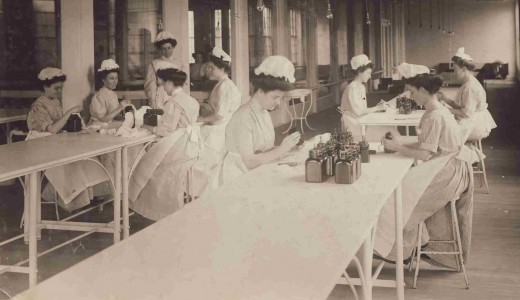
Completing this roster of extraordinary women was Edith V---, a college educated scientist, and one of four staff scientists in our Scientific Department. This 1909 marriage announcement in The New York Times mentions that Edith V--- was from Minnesota and went to college in Wisconsin. So it’s quite possible that she moved to New Brunswick for work – a position in the Johnson & Johnson Scientific Department would have been a rare and extremely welcome opportunity for a female scientist over 100 years ago. (Since Fred Kilmer -- an early supporter of women in the field of pharmacy -- was our chief scientist, it’s likely that he hired Edith V---, our first female scientist!)
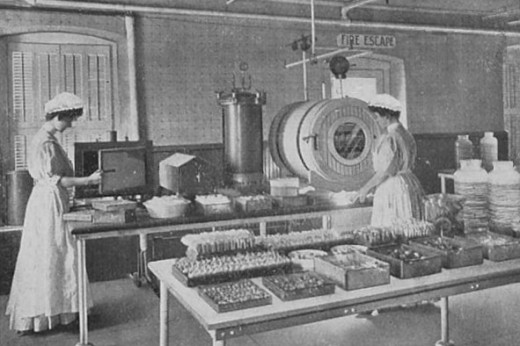
By 1912 sterile suture manufacturing had been moved into a separate department – the Ligature Department – which had a female supervisor as well. It should be noted that the Aseptic Department and the Ligature Department, with their rigorous sterile manufacturing procedures and surgical cleanliness, were the two most exacting areas of the Company – and both of them were supervised by women in 1908 and 1912.
In addition, Elizabeth P---, Laura R--- and Gussie D--- were on the First Aid Staff, another role of great responsibility. They were trained in accordance with the best practices in the JOHNSON’S® First Aid Manual, and they were first responders in case of injury or illness in the areas of manufacturing that they supervised.
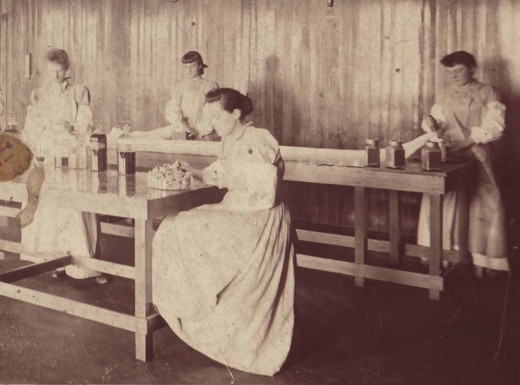
127 years after those pioneering eight women helped Johnson & Johnson open its doors, women occupy a tremendous variety of leadership positions throughout the Johnson & Johnson Family of Companies across the world. As we celebrate the global contributions of women on this International Women’s Day, we also celebrate the eight women who rolled up their sleeves and helped a little company called Johnson & Johnson get off the ground in 1886…and whose spirit of innovation and adventure continues to drive our employees today.
